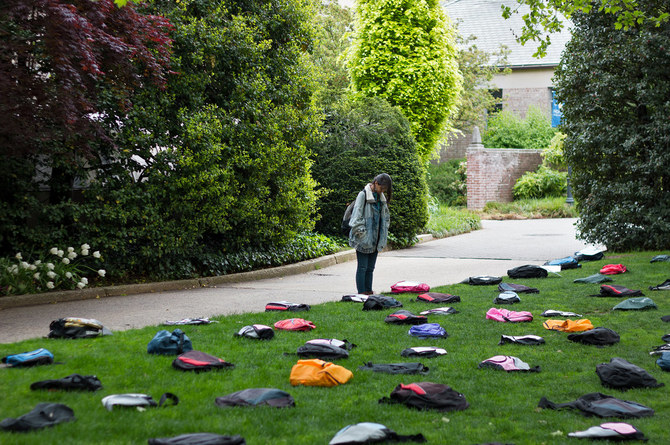
- ARAB NEWS
- 18 Jul 2025

Parents and educators have good reason to consider every age in a child’s developmental process to be a crucial step on their journey toward adulthood. And while specialists may argue about whether one stage is more crucial than others, the fact that the final teenage years and early 20s can be a sensitive time is little disputed.
College is where many life-forming activities take place; the same is true for decisions, friendships and, at times, romantic relationships. For most individuals who go to university, 18 to 22, or the college age years, are not only informative in the education and professional training opportunities they usually offer, they are also formative. Early adulthood can shape the kind of adult each person grows into — at least for a good part of their future life. It is a stressful transition.
Parents, educators and a fast-growing number of university and college administrative staff work together to put the safety and health of students at the top of their priorities. In a previous column, I mentioned the lengths to which universities have been keen to go in order to protect their diverse student population from the coronavirus pandemic and the health risks infection presents, sometimes making serious sacrifices in other educational priorities such as social exposure and cultural exchange. But unbeknownst to these keen observers, a hidden risk to students’ lives lurks in dark corners of their tightly monitored campuses. The new risk is suicide, and college health professionals are crying for help.
According to a number of published academic studies on mental health, suicide is the second-leading cause of death among university students in the US. In 2001, of the college students who were polled for a study published by the American Psychological Association, 52 percent reported experiencing depression and 9 percent declared that they had contemplated suicide during their college years.
While not all campuses make such information public, individual institutions report high numbers. The Counseling and Psychological Services of the University of Michigan offers on its website facts and statistics anyone concerned with the health of college-age students should pay attention to. At the time of writing these lines, it stated that, of the university’s students who have used the service, 38 percent “have thought about or considered suicide.”
In other parts of the world, the story may be different but its moral remains the same. In England and Wales, according to one interpretation of nationwide statistics, 1,330 students die by suicide every year. As is the case in the US, individual stories make it, painfully, to the media and become the subject of ethical and legal debates. Whether parents object to the mental health care their late young child had received, or whether they express appreciation for the way in which a difficult story was handled by university and health services staff, they all share one thing.
Parents who speak to the press do so in order to prevent such tragedies from happening again. The problem, as the bereaved parent often laments, is the shame and silent suffering they wish their child had not endured.
Despite mental health making strides in becoming a regular subject in public debates, suicide remains a taboo.
Tala Jarjour
Despite mental health making strides in becoming a regular subject in public debates, suicide remains a taboo.
In the Arab world and much of the Middle East, where mental health is yet to be acknowledged as an inherent part of healthcare for all individuals and societies, many who suffer do not have the ability to inform a personal confidant, let alone have the luxury of consulting a mental health professional.
They fear shame. In some institutions of higher education in the region, staff members entrusted with student health, where they exist, may not have adequate training to address the potential risk of suicide. For these and other reasons, suicide can be the first sign of trouble anyone notices.
Suicide among university students is an alarming reality, and one that is yet to receive the attention it necessitates. But there is good news. Of the many worries a college student may encounter, this particular threat is preventable. Yet, for suicide prevention to be possible and its risk to be minimized, experts assert, a key strategy is to identify individuals who are disposed to suicidal ideation and action. This begins with equipping university staff with the right expertise to encourage students whose mental health is taking a toll to seek help from specialists. Then they must make sure students find that help available, and that it is adequate when they do.